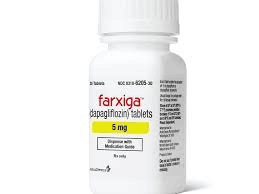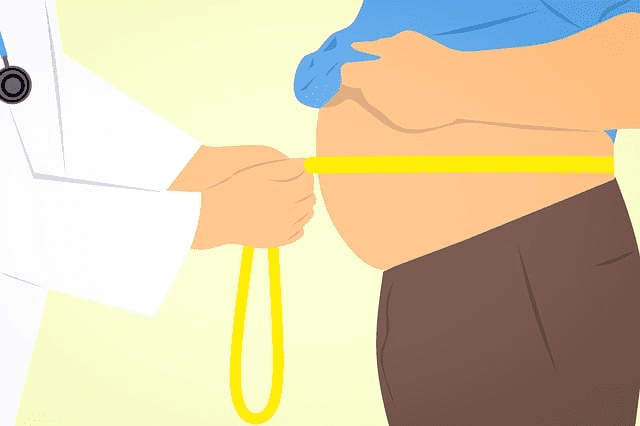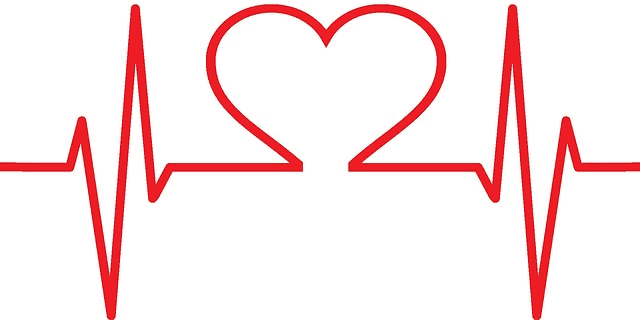In the quest for effective weight loss solutions, Farxiga has emerged as a medication that is great for people with diabetes. But does Farxiga cause weight loss?
By examining the effects, benefits, and considerations of using Farxiga for weight loss, we aim to provide valuable insights for individuals seeking a comprehensive understanding of this topic.
What Is Farxiga?

Farxiga is a medication that falls under the class of drugs called sodium-glucose cotransporter-2 (SGLT2) inhibitors.
It is primarily used for the treatment of type 2 diabetes and works by helping to lower blood sugar levels.
Farxiga is specifically designed to target and inhibit SGLT2 enzymes in the kidneys, which are responsible for reabsorbing glucose back into the bloodstream.
By blocking the reabsorption of glucose, Farxiga increases the excretion of glucose through urine.
This not only helps to lower blood glucose levels but also contributes to weight loss.
The excretion of glucose in urine means that the body is expelling excess sugar instead of storing it as fat, leading to gradual and sustainable weight loss over time.
It is important to note that while Farxiga can promote weight loss, it is not a standalone weight loss medication.
To achieve optimal weight loss results with Farxiga, it is crucial to integrate it into a comprehensive treatment plan.
This plan should include a healthy diet a healthcare professional recommends, regular physical activity, and other diabetes management strategies.
Other SGLT2 Inhibitors

SGLT2 (sodium-glucose cotransporter-2) inhibitors are a class of drugs used primarily to treat type 2 diabetes.
These medications work by preventing the kidneys from reabsorbing glucose back into the blood, leading to its excretion in urine, which helps to lower blood glucose levels.
Here are some notable brand-name SGLT2 inhibitors:
Canagliflozin (Invokana): One of the first SGLT2 inhibitors, Invokana is widely used in managing blood sugar levels in people with type 2 diabetes.
Dapagliflozin (Farxiga): Farxiga is not only effective in managing diabetes but also shows benefits in heart failure and kidney disease treatment.
Empagliflozin (Jardiance): Known for its effectiveness in lowering the blood sugar level, Jardiance is also beneficial for cardiovascular health.
Ertugliflozin (Steglatro): Steglatro is a newer addition to the SGLT2 inhibitor class, also aimed at managing blood sugar levels in type 2 diabetes.
Bexagliflozin (Brenzavvy): The newest member of the SGLT2 inhibitor family, Brenzavvy has been recently approved and offers another option for diabetes management.
Combination Medications: There are also combination diabetes medications, like Qtern (dapagliflozin/saxagliptin), Segluromet (ertugliflozin/metformin), and Steglujan (ertugliflozin/sitagliptin) that include SGLT2 inhibitors as part of their formulation, offering additional benefits for diabetes treatment.
These medications have revolutionized the management of type 2 diabetes, offering not only blood sugar control but also additional cardiovascular and renal benefits.
As with any medication, individuals need to consult their healthcare provider to determine the best treatment plan for their specific needs.
How Rapid Is Weight Loss With Farxiga?

The speed at which weight loss occurs can vary from person to person and depends on various factors such as individual metabolism, diet, exercise routine, and medication adherence.
Some individuals may experience noticeable weight loss within weeks of starting Farxiga, while others may see gradual changes over a more extended period.
The mechanism behind Farxiga’s weight loss effects involves its action on the kidneys.
It belongs to a class of drugs known as SGLT2 inhibitors, which help the kidneys excrete excess glucose through urine.
This process not only helps manage low blood sugar levels but also contributes to calorie loss, thus promoting weight loss.
Duration for Noticeable Weight Loss: Studies indicate that people taking Farxiga may start to see weight loss within a few weeks of starting the medication.
The rate and extent of weight loss can depend on various factors, including dosage, individual metabolism, diet, and exercise habits.
Average weight loss: In clinical trials, patients taking Farxiga alone, at doses of either 5 mg or 10 mg daily, experienced an average weight loss of about 6 pounds over 24 weeks.
This suggests a gradual weight loss process over the counter over several months.
Individual Variability: It’s important to note that individual results can vary. While some may experience significant weight loss, others may see more modest results.
The effectiveness of Farxiga for weight loss can be influenced by individual health profiles and lifestyle factors.
Not a Weight Loss Drug: Although Farxiga can lead to weight loss, it is not FDA-approved as a weight loss drug. Its primary use is to manage blood glucose levels in people with type 2 diabetes.
This doesn’t mean that a healthcare provider cannot prescribe it for weight loss. This is called “off-label” prescribing.
It is worth mentioning that weight loss with Farxiga should be approached gradually and sustainably. Rapid weight loss can sometimes pose potential health risks.
Therefore, it is advisable to consult with a healthcare professional before embarking on any weight loss journey, especially if you have any underlying medical conditions.
Exploring The Benefits of Weight Loss with Farxiga

Enhanced Blood Sugar Control
Farxiga’s primary function is to lower blood sugar levels in individuals with type 2 diabetes. By improving insulin sensitivity and reducing the amount of glucose reabsorbed by the kidneys,
Farxiga helps maintain optimal blood sugar levels. This dual benefit of low blood pressure and sugar control and weight loss makes Farxiga a valuable option for individuals with both conditions.
Cardiovascular Health
Research suggests that Farxiga’s weight loss effects may contribute to improved cardiovascular health.
Excess weight is often associated with an increased risk of heart disease and related complications.
By shedding pounds, individuals may experience reduced strain on the heart, lower blood pressure, and improve overall cardiovascular function.
Sustainable Lifestyle Changes
Using Farxiga as a tool for weight loss can encourage individuals to adopt healthy lifestyle habits.
As weight loss becomes evident, individuals may feel motivated to engage in regular physical activity and make mindful dietary choices.
Farxiga’s effects can catalyze positive lifestyle changes that contribute to long-term well-being.
Other Benefits of Farxiga

Type 2 diabetes
Lowering Blood Sugar Levels: Farxiga works by helping the kidneys excrete more glucose (sugar) from the bloodstream through urine.
This process reduces the overall blood glucose levels, which is crucial for managing type 2 diabetes.
Improving A1C Levels: Regular use of Farxiga, along with diet and exercise, has been proven to lower A1C levels significantly.
A1C is a measure of average blood sugar levels over the past two to three months, and reducing it is vital in diabetes management.
Reducing Risk of Worsening Kidney Disease: Farxiga is also used to lower the risk of kidney disease progression, end-stage kidney disease, and cardiovascular death in individuals with type 2 diabetes, making it a multifaceted treatment option.
Adjunct to Diet and Exercise: As part of a comprehensive treatment plan, Farxiga is indicated as an adjunct to diet and exercise to improve glycemic control in adults with type 2 diabetes mellitus.
Heart failure
Farxiga (dapagliflozin) has been recognized for its benefits in treating patients with heart failure, including those without diabetes. Here’s how it helps:
Reducing Cardiovascular Death Risk: Farxiga has been shown to significantly reduce the risk of cardiovascular death in patients with heart failure.
Lowering Hospitalization Rates: It also helps in reducing the likelihood of hospitalization for heart failure. This is crucial in improving the overall quality of life for patients with heart failure.
Improving Survival and Reducing Hospitalization Need: Clinical trials have demonstrated that Farxiga can improve survival rates and reduce the need for hospitalization in adults with heart failure, particularly those with reduced ejection fraction.
Extending Benefits to a Wider Patient Group: Farxiga’s approval has been extended to include a broader range of patients with heart failure, enhancing its utility as a treatment option.
Preventing and Delaying Cardiorenal Disease: Research indicates Farxiga’s efficacy in preventing and delaying cardiorenal disease while protecting the organs, is an important aspect of managing heart failure.
Farxiga’s role in heart failure treatment represents a significant advancement, offering hope and improved outcomes for many patients suffering from this condition.
Chronic kidney disease
Farxiga (dapagliflozin) is beneficial for individuals with chronic kidney disease (CKD) in several ways:
Reducing the Progression of Kidney Disease: Farxiga is used to lessen the various risk factors of CKD progressing further.
It helps in delaying the worsening of kidney disease and can reduce the likelihood of reaching end-stage kidney disease.
Lowering Risk of Cardiovascular Events: Farxiga has shown efficacy in reducing the risk of serious cardiovascular disease and death in patients with CKD.
This is particularly important as cardiovascular issues are a common complication in CKD.
Mechanism of Action: As an SGLT2 inhibitor, Farxiga works by causing the kidneys to remove glucose and sodium from the blood through urine.
This mechanism not only helps in managing blood sugar levels but also has a protective effect on the kidneys by reducing the workload on them.
Clinical Trial Results: The DAPA-CKD Phase III trial demonstrated that Farxiga achieved a significant reduction in the composite risk of worsening kidney function, end-stage kidney disease, or risk of cardiovascular or renal death.
By improving both kidney and cardiovascular health, Farxiga offers a multifaceted approach to managing CKD, making it a valuable treatment option for those with this condition.
Dosing Guidelines
The dosing guidelines for Farxiga (dapagliflozin) are as follows:
Standard Dosing: The typical starting dose of Farxiga for adults is 5 mg taken orally once daily. This can be taken with or without food.
Dose Adjustments: Based on the patient’s response and tolerance, the dose may be increased to 10 mg once daily.
Considerations for Dosing: The decision to adjust the dose should consider factors such as the patient’s overall health, kidney function, and specific treatment goals.
Usage in Specific Populations: Special consideration should be given when prescribing Farxiga to certain populations, such as the elderly or those with renal impairment, as dose adjustments may be necessary.
Consultation with Healthcare Provider: It is crucial for patients to follow the dosing guidelines prescribed by their healthcare provider, as individual needs can vary.
For detailed dosing information, including adjustments for specific conditions or in combination with other medications, patients should refer to their healthcare provider or the prescribing information for Farxiga.
Side Effects Of Farxiga
Farxiga, a popular diabetes medication, has been proven effective in managing blood sugar levels in people with type 2 diabetes. However, like any other medication, it comes with potential side effects that individuals should be aware of.
-
Urinary Tract Infections (UTIs): One of the most common side effects of Farxiga is urinary tract infections (UTIs). Some individuals may experience frequent urination, pain or burning during urination, and even blood in the urine. UTIs can be uncomfortable and require medical treatment.
-
Genital Yeast Infections: Another potential side effect of Farxiga is genital yeast infections.
This occurs more commonly in women and can cause itching, redness, and discharge.
It is important to seek medical attention if these symptoms occur, as yeast infections can worsen if left untreated.
-
Decrease In Blood Pressure Levels: Farxiga can also affect blood pressure levels. Some individuals may experience a decrease in blood pressure, which can lead to dizziness or lightheadedness.
Monitoring blood pressure regularly and informing healthcare professionals of any changes is crucial to ensure appropriate management.
-
Developing Ketoacids: While Farxiga has been shown to effectively reduce blood glucose levels, there is a potential risk of developing diabetic ketoacidosis.
This condition is characterized by high levels of ketones in the blood, which can be dangerous if left untreated.
Symptoms of ketoacidosis include excessive thirst, frequent urination, fatigue, and fruity-scented breath. Immediate medical attention is necessary if these symptoms occur.
-
Mild Effects: In some cases, Farxiga may cause mild side effects such as nausea, headaches, and dizziness.
These usually subside over time as the body adjusts to the medication. However, if these side effects persist or become severe, it is essential to consult a healthcare professional.
It is important to note that the above-mentioned side effects are not exhaustive, and there may be additional risks or complications associated with Farxiga. Therefore, it is crucial to discuss any concerns or potential side effects with a healthcare professional before starting this medication.
Who Should Not Take Farxiga
Certain individuals should avoid taking Farxiga (dapagliflozin) due to potential health risks or contraindications:
People with Serious Hypersensitivity to Dapagliflozin: Individuals who have experienced severe allergic reactions, such as anaphylaxis or angioedema, to dapagliflozin should not take Farxiga.
Patients on Dialysis: Farxiga is not recommended for patients who are undergoing dialysis.
Personal or Family History of MTC or MEN 2: Those with a personal or family history of medullary thyroid carcinoma (MTC) or multiple endocrine neoplasia syndrome type 2 (MEN 2) should avoid Farxiga.
History of Severe Hypersensitivity Reactions to Exenatide: Patients with a history of serious hypersensitivity reactions to exenatide or its components should not use Farxiga.
Individuals must consult with their healthcare provider before starting Farxiga to ensure it’s safe and appropriate for their health condition.
Summary
In the pursuit of weight loss, Farxiga offers a potential solution that goes beyond managing blood sugar levels.
While the speed of weight loss with Farxiga varies among individuals, its effects can be significant when integrated into a holistic approach that includes lifestyle changes and medical guidance.
As with any medication, consulting a healthcare professional is essential to determine if Farxiga is the right choice for achieving weight loss goals.
Remember, sustainable weight loss involves a combination of factors, including medication, diet, exercise, and personalized medical advice.
By addressing these aspects comprehensively, individuals can embark on a journey toward improved health and well-being.
Frequently Asked Questions
What is Farxiga and How Does it Work?
Farxiga is a medication classified as a sodium-glucose cotransporter-2 (SGLT2) inhibitor, primarily used for treating type 2 diabetes. It works by inhibiting SGLT2 enzymes in the kidneys, reducing glucose reabsorption, and increasing its excretion through urine, which can also lead to weight loss.
Is Farxiga a Weight Loss Medication?
While Farxiga can contribute to weight loss, it is not primarily a weight loss medication. It is intended for managing high blood sugar levels in type 2 diabetes, but weight loss is a beneficial side effect.
How Quickly Can You Lose Weight with Farxiga?
The rate of weight loss varies among individuals. Factors like metabolism, diet, exercise, and medication adherence play a role. Some may notice weight loss within weeks, while for others, it might be more gradual.
What are the Benefits of Losing Weight with Farxiga?
Benefits include enhanced blood sugar control in type 2 diabetes, potential improvements in cardiovascular health, and the encouragement of sustainable lifestyle changes like regular exercise and a healthy diet.
Are There Any Side Effects of Using Farxiga?
Common side effects include urinary tract infections, genital yeast infections, decrease in blood pressure, risk of developing diabetic ketoacidosis, and mild effects like nausea, headaches, and dizziness. It’s important to consult with a healthcare professional regarding these side effects.
Is Rapid Weight Loss with Farxiga Safe?
Rapid weight loss can sometimes pose health risks. It’s advisable to aim for gradual and sustainable weight loss and consult a healthcare professional, especially if you have underlying medical conditions.
